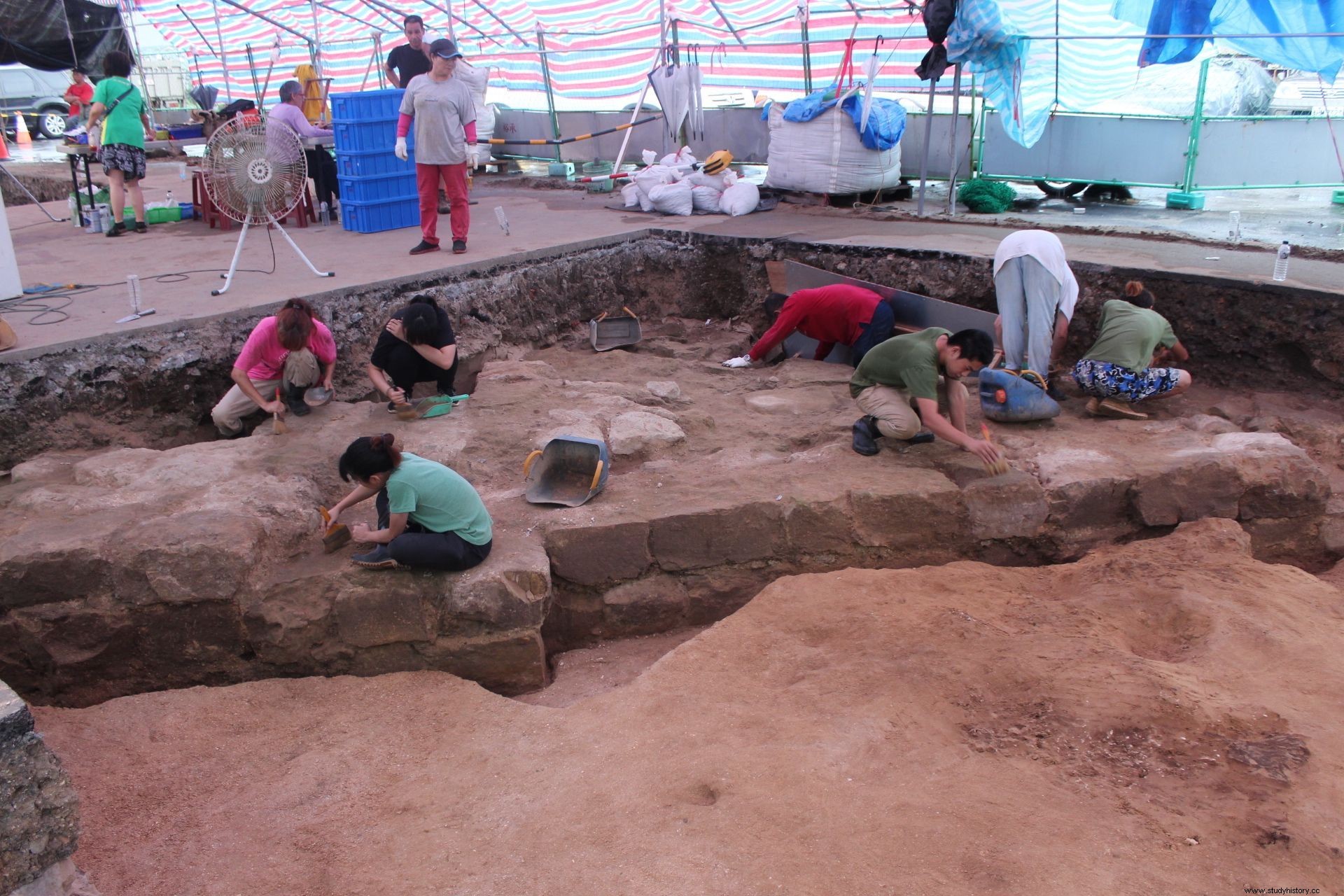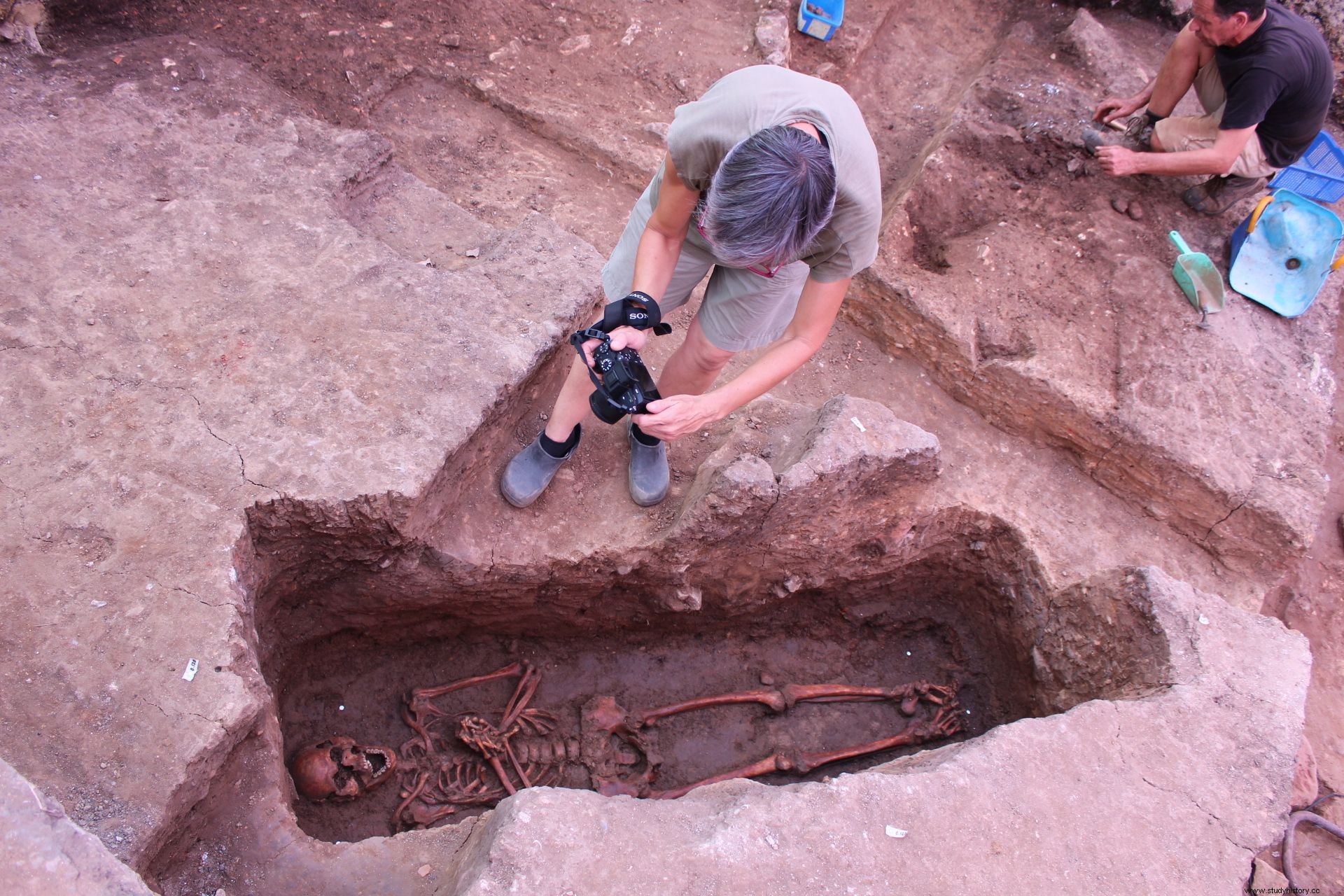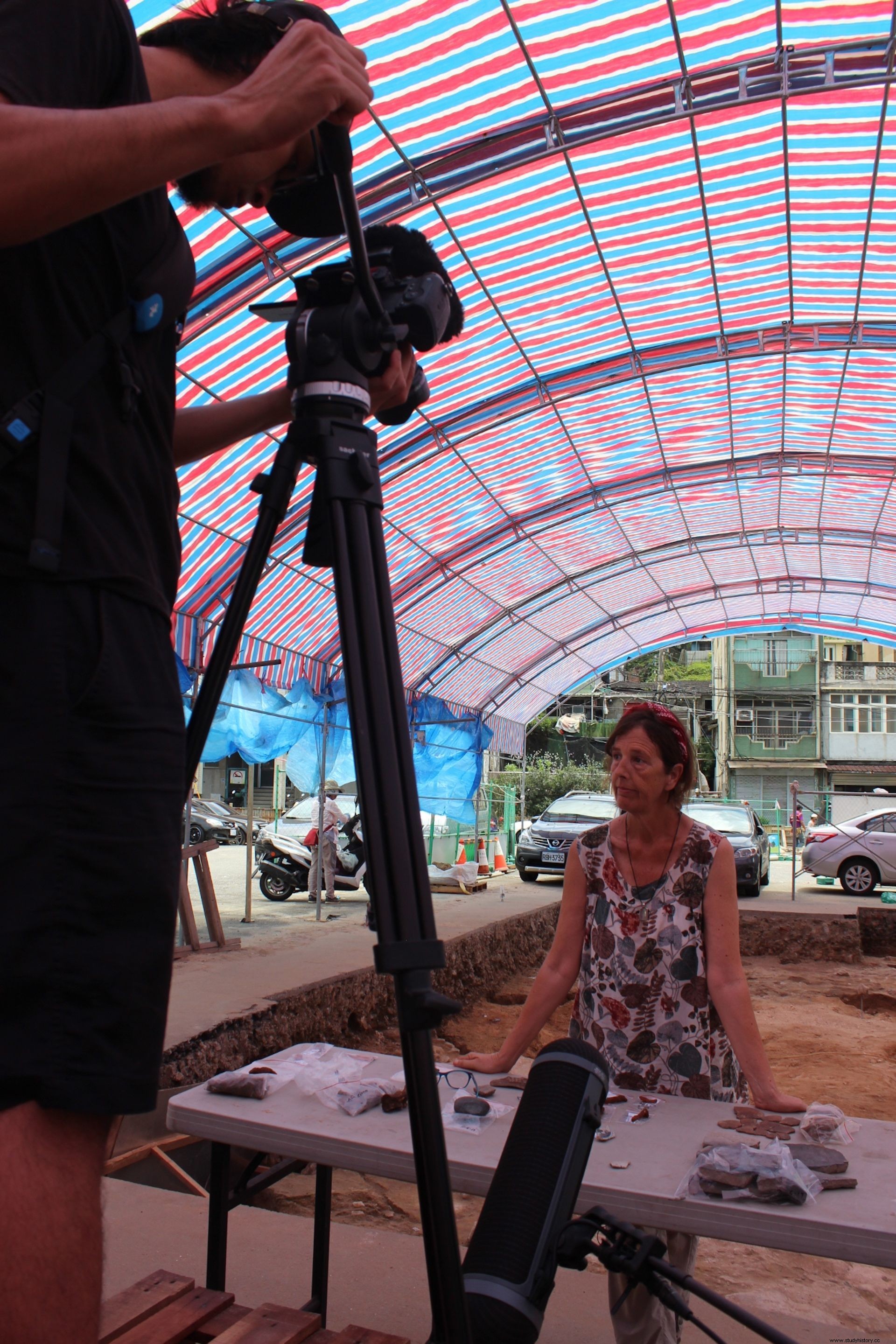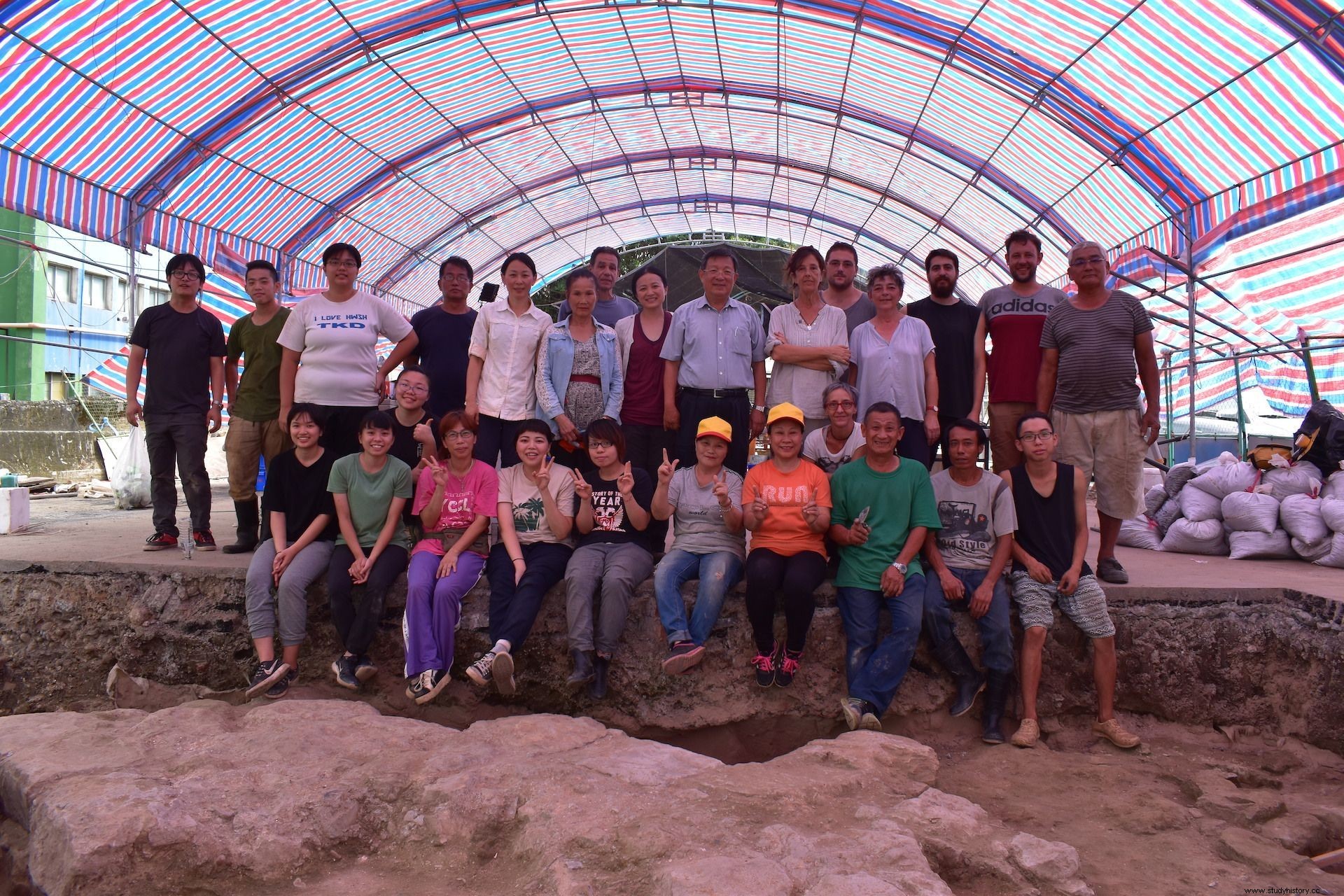
On May 1 a new campaign of archaeological activities at the Heping Dao B site (Keelung, Taiwan), which ended on July 15. The project, co-directed by Dr. María Cruz Berrocal (IIIPC, University of Cantabria) and Dr. Tsang Chenghwa (National Tsing Hua University), began its journey in 2011 and to date 5 archaeological excavation campaigns have been carried out , with funding from various institutions, including the CSIC, the University of Konstanz, the Ministry of Economy and the Ministry of Culture of Spain, the Chiang Ching Kuo Foundation, and the Palarq Foundation.
The complete stratification of the site has allowed us to discover the characteristics of the prehistoric settlement throughout the duration of this period, with stilt houses, complete ceramic furnishings located in situ and an interesting repertoire of stone industry with tools and ornaments made of nephrite, slate, schist, etc. The occupation of the settlement does not seem to be interrupted and clear indications of the dynamism of Taiwanese prehistoric communities have been documented, including the indigenous development of iron metallurgy, and contacts with mainland Chinese and Southeast Asian communities. These themes are key right now in Asia-Pacific prehistoric archaeology.

As for the Spanish colony, during the years of the project, the remains of the Dominican church of San Salvador have been located, burials associated with the European colony – Spanish first and Dutch later – as well as important signs of the aboriginal settlement located in the place where part of the colony settled.
With these results, Heping Dao B becomes a reference site in the Asia-Pacific area not only for the European colonial period but also for pre-colonial prehistoric periods.
During the 2019 campaign we have documented new construction remains of the conventual church with the location of its apse, equipped with a quadrangular apse, three new burials located inside the temple and two more located outside. Several of the burials present the hands intertwined in a praying position and in one of the tombs a small fragmented cross has been found, possibly made of bronze, which seems to be of peninsular origin.

The burial assemblage documented at Heping Dao is from great interest. They are divided into two groups:those oriented W-E (4 individuals) and N-S (4 individuals) in addition to a child buried according to the aboriginal rite and an empty tomb inside the surface of the church, which in principle can be associated with the exhumation of one of the missionaries when the Spanish were evacuated from Heping Dao. The remains of said missionary, considered a holy man, were transported by the Spanish to Manila, according to the documents. His tomb occupied a preferential place next to the altar of the church.
With these burials we have documented for the first time in the Asia-Pacific area remains of European people who died in the region in the first decades of the colonial phase. In Heping Dao the dates of these remains correspond to a very precise chronological range, 1626/1668, which gives them an added archaeological value. Added to this is the possibility of carrying out precise DNA and isotope studies for the first time in the area, not only of Europeans, with the methodological challenge that this entails, but also of other local and Asia-Pacific populations, also buried in the Heping Dao Cemetery. These analyzes are carried out by the Max Planck Institute in Jena, Germany, who, through its researcher Selina Carlhoff, who has traveled to Heping Dao in this campaign, has exhaustively extracted samples (preferably from petrous bone) for subsequent analyses. In addition, special attention has been paid to botanical studies with the presence of Dr. Alexandre Chevalier (Royal Belgian Institute of Natural Sciences), who has been in charge of supervising the flotation works aimed at the recovery of botanical remains both from the prehistoric period like colonial. For both of us we have specific research questions of great interest in Pacific archaeology, particularly the expansion of domesticated species during the Neolithic and the introduction of new species by European settlers.

During these two months special interest has been placed on the training of Taiwanese archaeologists and students in the stratigraphic excavation of the site. This type of excavation is practically unknown in Taiwan, and for this reason our project has brought added value that the Taiwanese highly value. Not only at an academic level is our work recognized for what is innovative and for its quality, but our archaeological work has aroused great media expectation throughout the entire campaign. This has resulted in our participation in the filming of a documentary about the colonial period and in the regular presence in the excavation of local and national media with television interviews and in the written press. We have received repeated visits from the mayor of Keelung who has conveyed his gratitude to the Spanish team for the great contribution to the knowledge of its past, a historical legacy that had remained unpublished until the start of this archaeological project in 2011. The car park where the The site has been declared a protected area of archaeological interest and the council, in collaboration with the central government of Taiwan, is developing a project to build an interpretation center or museum on the site with part of the located remains preserved in site . The site deserves it since it has placed Heping Dao, an economically disadvantaged place in the country's recent history, in the orbit of high-level academic studies and potential visits in increasing numbers, since the preserved and excavated archaeological remains are unique in the Asia-Pacific sphere and much of the Pacific in general.
